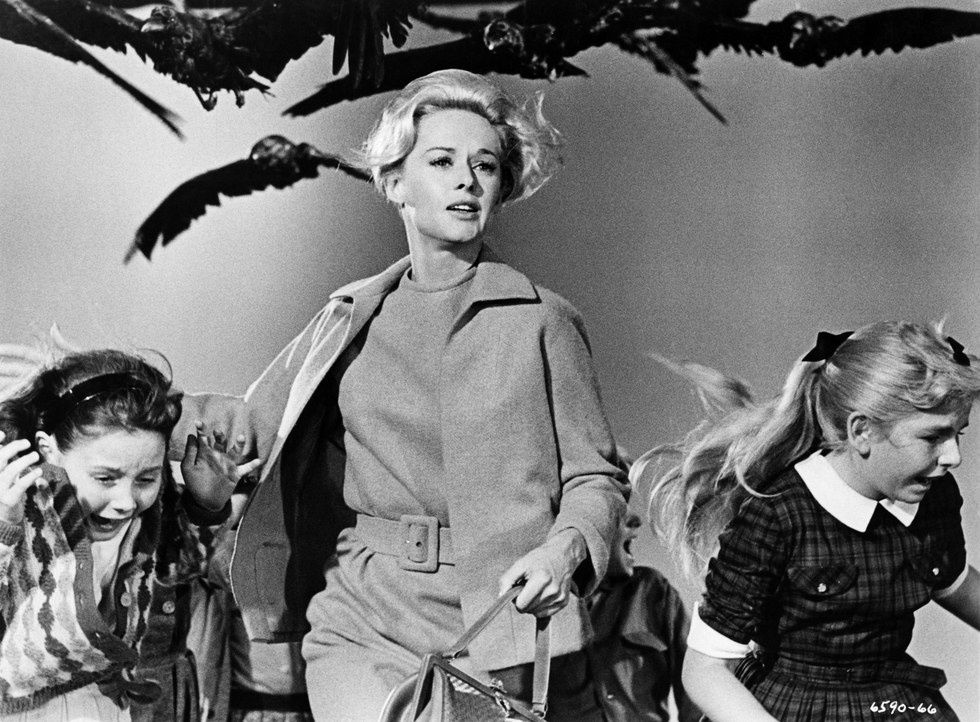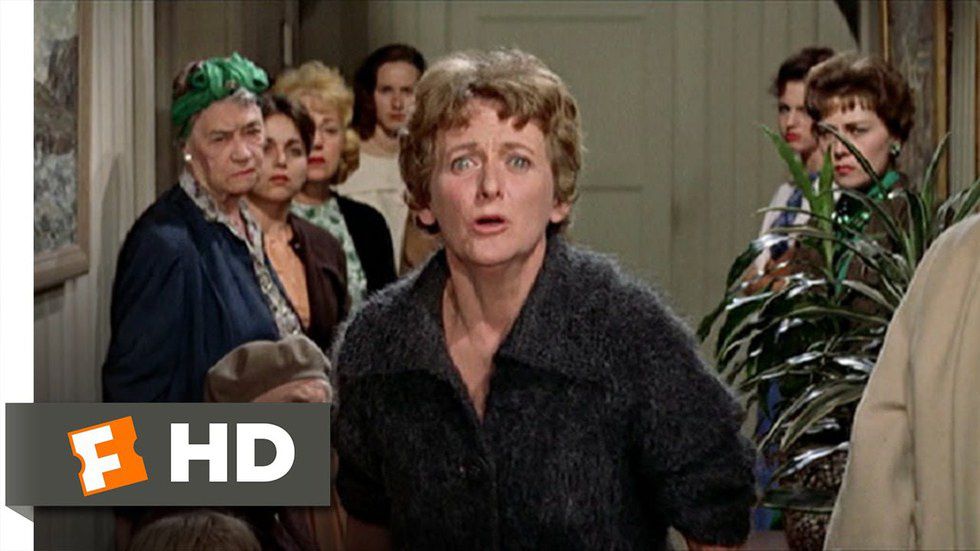Books and film are often quite different from each other; even when allegedly being based on one another. When reading a story, one can be immersed completely within the pages for hours on end, creating worlds and realms to explore, discover and all on one’s own. A film, however, has a condensed amount of time to show filmmakers’ interpretation of sets, areas and themes; subsequently relying on various techniques, tropes and styles to create the terrain upon which to adapt a story.
According to Linda Costanzo Cahir, a radical film translation “reshapes the book in extreme and revolutionary ways both as a means of interpreting the literature and of making the film a more fully independent work.”
Alfred Hitchcock’s translation of Daphne Du Maurier’s horror novelette,"The Birds," is not only a radical film translation because it changes the book in extreme ways, but a revolutionary exposition because it relies heavily on female characters to drive the film.
"The Birds’" use of strong female characters who directly affect the film’s outcome implies the necessity of women and their indispensable influence in the world of film; henceforth separating itself independently by augmenting a theme of female power quelled from its original form.
Melanie Daniels is the protagonist in the film version of "The Birds." She is a beautiful, initiative and ambitious character whom we first encounter at her job in San Francisco. Shortly thereafter, a handsome and mysterious man named Mitch Brenner enters and buys a pair of sweet lovebirds from her. Mitch leaves the establishment without bringing the birds along with him.
Melanie takes it upon herself to bring Mitch his birds. She leaves for the town of Bodega Bay, which lies on the outskirts of San Francisco. She arrives and enters the Brenner home, placing the lovebirds inside. As she leaves, Melanie is attacked by a seagull, thus beginning the incidence of the rest of the film.
Now, Immediately we understand important differences in character between Melanie and Mrs.Hocken, Nat’s wife from Du Maurier’s tale. First of all, in the Du Maurier story, Nat Hocken’s wife is only referred to as "Mrs. Hocken." She has no real independence, no real importance, no physical description and no unique defining qualities that would make her focal to the plot of "The Birds."
According to Kirk Beetz “Mrs. Hocken appears as a stereotypical 'weak woman' and is not very fleshed out; perhaps this is why du Maurier never gives her a name. While she does comfort her children and often tries to shield them from fearful thoughts, she appears almost as afraid as they and displays a childlike sense of insecurity and terror. She refuses to stay in the house with the children when Nat decides to go for supplies, and she never displays the confidence in their survival that her husband has.”
Mrs. Hocken never encounters the birds as her husband does. She lives vicariously through Nat’s updates and official reports over the radio. Furthermore, the submissive role of the feminine figure in the Du Maurier story neither has a direct (or even indirect) impact on the outcome of the overall story. Mrs. Hocken could just as well have not existed in the short story and the outcome would not have changed.
Contrary to this, Alfred Hitchcock’s rendition of "The Birds" is nothing without female presences involved. I begin my argument by reiterating the role of Melanie. She not only influences the story, Melanie builds substantial relationships with important female characters such as Lydia Brenner, Cynthia Brenner, Annie Hayworth and the rest of the community of Bodega Bay.
An example of the importance of women in "The Birds" comes in the diner scene. During this pivotal scene, Melanie encounters a knowledgeable old woman who avidly revokes Melanie’s claims of the crazed birds. Once the old woman is proven wrong, and the birds attack, a terrified female diner patron lashes out at Melanie, blaming her for the attacks on Bodega Bay.
“Who are you? What are you? Where did you come from? I think you're the cause of all of this. I think you're evil. EVIL!”
Through these few examples, we not only see women’s intelligence displayed in the elderly woman, we also encounter women’s willingness to speak out during the time of crisis. Rather than complying to patriarchal paradigm of the time period, women in this film assume a more forward role than even the men by initiating, aiding and making themselves visible as strong and valuable assets.
All in all, Melanie Daniels stands at the center as a woman of action. She experiences the largest arc in the whole story and is most directly involved with the core antagonists: the birds.
Melanie is involved in the first bird attack and causes the final attack of the film when she wanders upstairs into the attic. Without the presence of Melanie, the birds may never have entered Bodega Bay, and, subsequently, never activated rest of the important female characters. The radical translation by Hitchcock uses the techniques of filmmaking to augment women’s roles in a story originally barren of matriarchy.


























